Photos from Myanmar
| Home | About | Guestbook | Contact |
MYANMAR (BURMA) - 2006-2007

A short history of Myanmar
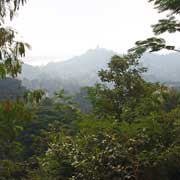
Myanmar, or Burma as officially known until 1989, is a fascinating multi-ethnic country in southeast Asia, bordering, clockwise from the top, Tibet, China, Laos, Thailand, Bangladesh and India. It has a total area of 676,578 km² and a long coastline of around 1,930 kilometres, along the Bay of Bengal and the Andaman Sea. The Ayeyarwady (Irrawaddy) River, over 2,100 kilometres long, almost bisects the country and, on the border with Tibet and Assam (India), is South East Asia’s highest mountain, Hkakabo Razi, rising to 5,889 metres.
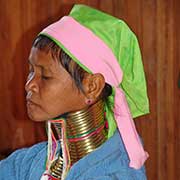
A fascinating aspect and the primary source of conflict in the country is its ethnic diversity. Of the over 60 million inhabitants, 68% is Bamar or Burmese. There are officially recognised minorities of Shan, Kayin (or Karen), Rakhine (formerly called Arakanese), Mon, Kayah (or Karenni), Chin and Kachin. There are many subgroups, like the Padaung or Kayan Lahwi, people whose women wear brass neck coils. The Kayan are themselves a subgroup of Red Karen or Karenni people, a Tibeto-Burman minority. Many of these groups have been striving for autonomy or outright independence from their Bamar rulers and faced horrific human rights abuses. The Muslim Rohingya people in Rakhine (Arakan) are described as one of the most prosecuted in the world. They are ethno-linguistically related to people of India and Bangladesh, and the Burmese government refuses to recognise them. However, their region and its people have been under Burmese rule since the 1700s.
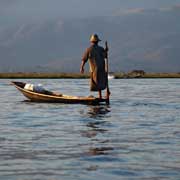
It has been proved that the region was home to Homo Erectus as far as 750,000 years ago and that around 10,000 BCE, a stone-age culture existed here. Around 500 BCE, there were iron-working settlements near present-day Mandalay, and rice-growing started soon after that. City-states emerged in central Myanmar around the second or first century BCE of the Pyu, a Tibeto-Burman people that had migrated southward from the Tibetan plateau or India. They traded and imported Buddhism from India. The Mon people arrived in the 6th Century and formed states along the southern coastline. Between 750 and 830, the Pyu came under attack by the Kingdom of Nanzhao, based in China’s Yunnan region and in the 9th Century the Mranma or Bamar (Burmese) formed a small settlement in Bagan (Pagan); the Burmese had been arriving from the eastern Himalaya region during the 8th and 9th Century, supplanting the Pyu.
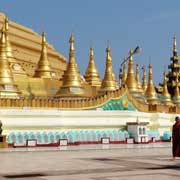
The Burmese King Anawrahta (1015-1078) of Pagan took the throne in 1044 and consolidated the various principalities into the first Burmese empire - he is considered the father of the nation. He embraced Theravada Buddhism, conquered the Mon and stopped the advance of the Hindu Khmer Empire. By the late 12th Century, Burmese culture and language had become dominant in the upper Irrawaddy valley. After Anawrahta’s death, the kingdom’s power declined, and Mongol invasions in the late 13th Century caused the collapse of Pagan. Shan tribes from the east formed states that dominated the area to the northwest and east of the Irrawaddy valley. The Mon established the kingdom of Hanthawaddy at Bago (Pegu) in 1287, while in 1364, the Shan founded the kingdom of Inwa (or Ava) near Mandalay and the Rakhine people in 1437 united the Arakan coastline, establishing the kingdom of Mrauk U.
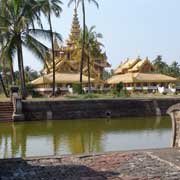
In the mid-16th Century, political unity returned when Tabinshweti, the King of Toungoo (or Taungoo), which had been a vassal state of Inwa, defeated Hanthawaddy. He founded the second Burmese Empire with its capital in Bago. His successor Bayinnaung then managed to conquer a vast area of South East Asia, including the Shan states and most of present-day Thailand and Laos. But following Bayinnaung’s death in 1581, what had been the largest empire in southeast Asia fell apart and collapsed in 1599. Siam (Thailand) occupied Tenasserim (Tanintharyi), and the Portuguese ruled Syriam (Thanlyin), a port near Yangon. However, the Toungoo dynasty defeated the Portuguese and Siamese and established a minor kingdom; its capital became Inwa (Ava) in 1636. The kings created a legal and political framework that survived into the 19th Century, reduced the power of the Shan chiefs and built a prosperous economy. However, raids from Manipur (India), a rebellion in Lanna (northern Thailand) and finally the sacking in 1752 of Inwa by the Mon, who, 12 years earlier, had re-established the Hanthawaddy Kingdom, brought it to an end. The Mon executed the last Toungoo King, ending the dynasty.
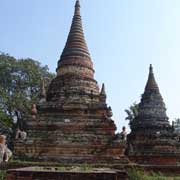
King Alaungpaya (1714-1760) was chief of Moksobo (Shwebo), a small village in Upper Burma. He became a national leader when the authority of Inwa declined; he managed to reunify Burma, subdue Manipur, recover Lanna and even drive out the French and English who by that time were giving help to the Restored Hanthawaddy Kingdom. He started the Konbaung dynasty and, in 1755, founded Yangon (Rangoon). He ransacked Manipur in 1756 and 1758 and invaded Siam (Thailand) in 1759, reaching their capital Ayutthaya in 1760. King Alaungpaya fell ill here and died soon after. The Burmese withdrew from Ayutthaya but formally annexed the upper Tenasserim coast (Tanintharyi). In 1767 Ayutthaya was destroyed by the Burmese army under Alaungpaya’s son Hsinbyushin, who had ascended to the throne in 1763. He had rebuilt the city of Ava (Inwa) and, in 1765, officially moved the kingdom’s capital there from Sagaing. Hsinbyushin waged military campaigns against Manipur, the Laotian states, Siam and the Chinese between 1764 and 1769 with victories over the Siamese and Chinese; this laid the foundation of Myanmar’s present border with China. Bodawpaya, another of Alaungpaya’s sons, had become King in 1782; he founded a new capital at Amarapura the following year and conquered Rakhine (Arakan) in 1785, Manipur in 1814 and Assam in 1817. His was the second-largest Burmese empire, but it sowed the seeds of conflict with the British, who had established themselves in India.
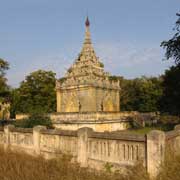
Based in Calcutta, the British had their designs on the region and actively supported rebellions against the Burmese in Manipur, Assam and Arakan. The First Anglo-Burmese War began primarily over the control of northeastern India and lasted from 5 March 1824 to 24 February 1826. It ended in a complete British victory and total British control of Assam, Manipur, Arakan and Tenasserim. But the cost was high: around 15,000 European and Indian soldiers died, and there were many Burmese army and civilian casualties. For the Burmese, this was the beginning of the end of their independence. An incident in which it was alleged two British sea captains had been kidnapped triggered the Second Anglo-Burmese war; it was fought from 5 April to 20 December 1852, resulting in the annexation of the whole of Lower Burma. The unpopular Burmese King at the time, Bagan Min, was overthrown in 1853 by his half brother Mindon Min; Mindon moved his capital to Mandalay in 1857. He became a popular and revered King, instituted reforms and modernised his kingdom, all the while trying to defend the upper part of Burma from British encroachments. He died in 1878 and was succeeded by Thibaw, one of his sons; almost all possible heirs were killed, on the orders of Hsinbyumashin, one of Mindon’s queens, so that her daughter Supayalat and son-in-law Thibaw would be Queen and King.
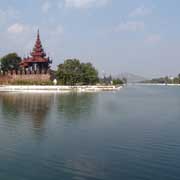
The British suspected Thibaw of aligning his country more closely with the French, who had established themselves in Indochina. In 1885 King Thibaw issued a proclamation calling upon his countrymen to liberate Lower Burma from the British. This was conveniently seized upon by the British to complete the conquest that had started in 1824. The Third Anglo-Burmese War took place from 7-29 November 1885, resulting in the occupation of Mandalay; King Thibaw was taken prisoner, and the British organised the looting of the palace and the city. Burma was formally annexed by the British on 1 January 1886. But the annexation was only the beginning of an insurgency that would last until 1896. As Burma was now part of “British India”, many Indians arrived as soldiers, civil servants, workers and traders; this caused strong Burmese resentment. By 1930 the capital Rangoon (Yangon) had a primarily Indian population. Chinese too were encouraged to immigrate and set up businesses. Riots often paralysed Rangoon; some of this was caused by disrespect by the British for the local culture and Buddhist religion - Buddhist monks became leaders in the resistance.
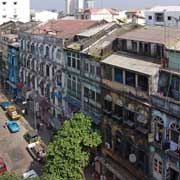
Burma became a separate colony on 1 April 1937 with Ba Maw, First Prime minister and Premier. He was outspoken about Burmese self-rule and opposed participation in the war against Japan. Bogyoke Aung San, born in 1915 and a student at Rangoon University, became a leader in the independence movement and formed the Burmese Independence Party in Japan in 1940 before that country entered the Second World War. He returned with invading Japanese troops the following year. The country was devastated in the war; although many Burmese initially fought with the Japanese against the British, some, mostly from ethnic minorities, fought with the British. The Burmese National Army switched sides in 1945. After the war, Aung San negotiated the Panglong Agreement, an agreement with ethnic leaders to guarantee independence as a unified state, but with the freedom for ethnic minorities to choose their own destiny after ten years if they were dissatisfied with the government; he was to be deputy chairman of a transitional government, but was assassinated by political rivals in July 1947.
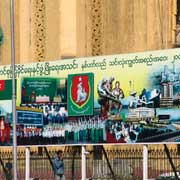
On 4 January 1948, the Union of Burma became an independent republic, combining Upper- and Lower Burma with the Frontier Areas, previously administered separately: the Shan States, Chin Hills and Kachin tracts, inhabited by ethnic minorities. Almost immediately, there were revolts - rebels, communists, and anti-communist Chinese soldiers who fled after Mao’s takeover. In the war, the hill tribes, who had fought with the British against the Japanese, mistrusted the Bamar government and formed ethnic armies. Gradually, under Prime Minister U Nu, the government regained control, but the economy was a mess, and in 1958, the military under General Ne Win assumed control. Elections in 1960 brought U Nu back to power, but, following more political turmoil, Ne Win took complete control in a coup d'état on 2 March 1962. Burma was now ruled by a military council that nationalised almost all aspects of society in what was called the “Burmese Road to Socialism”. The country, once rich, became an economic basket case and a repressive dictatorship. In 1974 a new constitution proclaimed the Socialist Republic of the Union of Burma, ruled through a one-party system by military officers. Protests were violently suppressed. After unrest in 1988 over economic mismanagement, political repression and a prophecy that the country would become free on 8 August 1988 (the 8888 Uprising), thousands were killed; a military coup on 18 September that year by the State Law and Order Restoration Council (SLORC) ended the uprising.
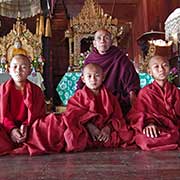
The SLORC established martial law under army commander-in-chief General Saw Maung, who promised to hold democratic elections in May 1989. It also abandoned socialism, changed the country’s name to “Union of Myanmar”, renamed towns and cities, and changed English names to Burmese ones. An opposition party, the National League for Democracy (NLD), formed with Aung San Suu Kyi, the daughter of murdered independence hero Aung San, emerging as a national icon. As her popularity was clear to the generals, she was placed under house arrest in July 1989. The elections were held in May 1990, and the NLD won overwhelmingly with 80% of the contested seats. However, the SLORC refused to cede power and continued to rule, renaming itself the State Peace and Development Council (SPDC). On 27 March 2006, the military junta built itself a new capital 320 kilometres north of Yangon, officially named it Naypyidaw, “city of kings”. In August 2007, protests triggered by fuel price increases led to a heavy crackdown; hundreds of Buddhist monks defied Aung San Suu Kyi’s house arrest in their saffron robes, leading it to be called the “Saffron Revolution”. International sanctions followed; in May 2008, Cyclone Nargis devastated the Irrawaddy delta; 200,000 people were killed or missing, the government delaying aid by the UN, causing further international outrage.

However, on 10 May 2008, a constitutional referendum was held, and the country’s name changed to “Republic of the Union of Myanmar”. General elections were held in 2010, and the military-backed Union Solidarity and Development Party declared victory, although there were allegations of irregularities. Nevertheless, the government embarked on a series of reforms, a new flag was adopted, and on 30 March 2011, the military junta was dissolved with Aung San Suu Kyi released. Thein Sein, a former military commander who had retired from the military the previous year, became President. He met with Aung San Suu Kyi on 19 August 2011; the press became free and international recognition brought visits by US Secretary of State Hillary Clinton and President Barack Obama in 2011 and 2012. There was hope that, at last, Myanmar would become a more free and democratic country. However, ethnic conflicts still existed between the “Tatmadaw”, the Myanmar Armed Forces and Kachin Independence Army, the Shan, Lahu and Karen people.
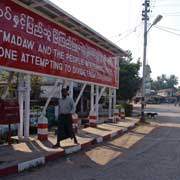
The Muslim Rohingya people, a minority living in the northwestern coastal Rakhine State, have been prosecuted by the Buddhist minority since the 1970s. Labelled by the government as “non-human beings” and illegal immigrants, although they lived in Rakhine State for centuries, they officially have been denied Burmese citizenship since 1982. They were deprived of the right to move freely and to receive higher education. But following armed attacks on border police posts in late 2016, the Burmese military began a major crackdown in the villages of northern Rakhine State. It reached a climax of genocide by the “Tatmadaw”, the Myanmar Armed Forces, in 2016-2017. Over a million Rohingya were forced to flee, most to Bangladesh, resulting in creating the world’s largest refugee camp. The UN has found evidence of mass killings, gang rapes, burning of villages, businesses, schools, and even infanticides. Nobel Peace Prize laureate Aung San Suu Kyi, now de facto head of the government, was criticised for her inaction and silence: nothing was done to prevent military abuses. The military, behind the scenes, was still firmly in charge.
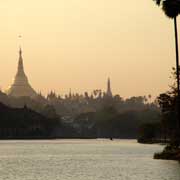
A general election was held on 8 November 2020. The ruling National League of Democracy won a considerable majority: 396 out of 476 parliamentary seats; the military proxy Union Solidarity and Development Party only got 33 seats. The army refused to accept it, declared the vote fraudulent and on 1 February 2021, the Tatmadaw deposed the government, detained Aung San Suu Kyi, charging her with various offences. The reaction was widespread protests, but the military brutally suppressed these, resulting in well over 1000 civilian deaths, including children, and over 3000 people being detained, some dying in custody. All freedoms won only ten years ago were revoked, and Myanmar again became a brutal military dictatorship. It will be a long time before Myanmar will be the free, open, democratic and peaceful country it so richly deserves to be.


